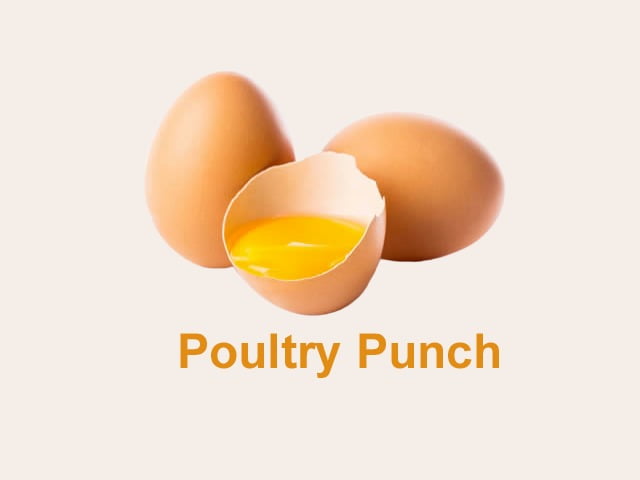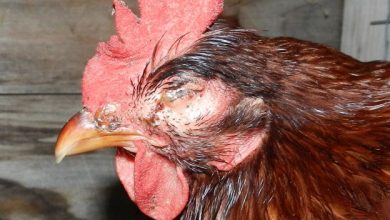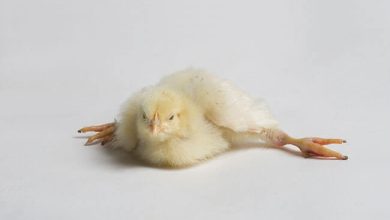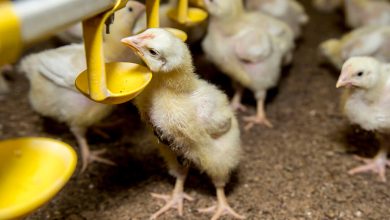Designer Eggs: Understanding the concept and future scope

Designer Eggs: Understanding the concept and future scope
Dr. Rushikesh A. Kantale, Dr. Rajesh V. Wagh* and Dr. O. P. Malav
Department of Livestock Products Technology,
College of Veterinary Science, Guru Angad Dev Veterinary and Animal Sciences University,
Ludhiana,Punjab – India
Abstract
Designer eggs are those whose composition has been altered from that of a normal egg. The composition of a chicken egg could be altered to make it more nutritious. Designer eggs are free of any harmful components, and created by altering the nutrition of chickens or controlling the immune systems of laying chickens. The designer eggs are thus a great food and vitamin supplemented product that provides benefits such as lower cholesterol, higher unsaturated fatty acids, an optimum omega-6 to omega-3 ratio, cardiovascular benefits, and so on. Consumers having lot of benefit from designer eggs, because designer eggs are improving the nutritional quality of eggs by increasing antioxidants and n-3 fatty acids like docosahexaenoic acid (DHA).
The benefits of simultaneously enriching eggs with vit-E, carotenoids, selenium, and DHA include enhanced polyunsaturated fatty acid (PUFA) stability during storage and cooking, high availability of nutrients like vitamin E and carotenoids, lack of off-taste also enhanced anti-oxidant as well as n-3 status of those who consume these eggs. “Designer eggs,” according to the relevant scientific research and review, can create a new generation or upcoming era of functional food industry for human beings.
Introduction Designer eggs
Animal-derived designer foods are made either by feeding specific diets or by using advanced technologies such as genetic engineering and cross-breeding (Alagawany et al., 2018). In the food sector, designer eggs are a popular category of Nutri-functional food. Advanced progressing of the poultry sector, there is a growing interest in poultry biotechnology for modifying egg composition for human health through genetic and nutritional alterations. As per Narhari (2005), the egg is an increasingly popular option for incorporating a variety of health-promoting ingredients. For this purpose, nutritional modification of the laying hens’ feed, it could be effectively producing an alteration of numerous nutrients in an egg (Hu et al., 2001). This can be achieved by adjusting sterol (Cholesterol) levels, lipid profiles, minerals and amino acids (AA) or by introducing beneficial pharmacological compounds (Alagawany et al., 2018). Designer eggs are vegetarian, immune-boosting, speciality or organic breakfast and lunch with rich in vitamins, minerals, balanced omega-6:3 FA ratio, low cholesterol, high IgG and vital pigment like Flavonoids. Now a day for humans, eggs remain a healthy, highly nutritious with a high nutritional content and quality. Eggs are one of the most popular foods in worldwide because of its nutritious profile, variety, and low cost as a foodstuff. In human diet phospholipids and fatty acids (saturated) are all major contributed through only by animal products (Eaton, 1992).
PUFAs (polyunsaturated fatty acids) were found possess unique governing functions, throughout a creation of various physiologically potent chemicals comprising like eicosanoids. The n-6/omega-6 (FA) is two of the most significant PUFA in modern diet. These PUFAs must be obtained through the diet (Parra Cabrera et al., 2011).
In the human body, PUFA (polyunsaturated fatty acids) (n-3 and n-6) being incompatible and have an impact on eicosanoid biosynthesis and inter-cellular communications (Surai, 2001). Arachidonic acid (20:4n-6) and (EPA; 20:5n-3) eicosapentaenoic acid and (DHA; 22:6n-3) docosahexaenoic acid can be formed by elongating and desaturating LA and ALA (Gregory et al., 2011). Due to the fact that these 2 classes of PUFAs are physiologically as well as functionally diverse, with often opposing physiological effects (Simopoulos, 1991). Many physiological responses in the human body are hypothesised to be influenced by the absolute level and equilibrium of n-6 and n-3 PUFAs in the diet.
Why need of designer eggs?
- The most commonly consumed eggs are chicken eggs, including minerals as well as vitamins like (vit-A), (vit-B2) riboflavin, (vit-B9), vit-B6, vit-B12, choline, Fe, Ca, potassium and phosphorus.
- Researcher, scientists and healthcare professionals faced big complexity and issue, because of egg high cholesterol (approximately 200-300mg/100g) contents (Alagawany et al., 2018).
- Nutritionally modified yolk/value added eggs are another technique to minimize the cholesterol effects of eggs. The total fat content of egg yolks cannot be changed; however, the fat chemical configuration might be changed by changed or revised type of nutrient feed formulation to chickens.
- Optimized formulated nutritional feeding to layer can easily alter saturated (FA) configuration of (Bird) yolk fat (Nutautaite et al., 2021).
- Consumers are always looking for novel food items, and they’re interested in industry for a new type of food which includes health and wellness benefits. The composition of “designer eggs” has been altered from that of the conventional egg because of standard, organic, nutritional rich quality, low fat content, highly healthy & delicious taste etc.
Health benefits
Omega-3 PUFA more than 600 mg and tocopherol more than 6 mg can be found in designer eggs. Eggs have additional health benefits due to their stable ratio omega-6/omega-3 (1:1) and SAFA ratios (1:1). As a result, designer eggs may provide, egg consumers around the world with a new food product alternative and functional choice (Raghuveer and Tandon, 2009; Alagawany et al., 2018). Docosahexaenoic acid (DHA) rich eggs like columbus eggs, omega 3 eggs, Bio-omega 3 eggs, England’s best, Greek eggs, Baby eggs, Achyrona mega eggs, and omega-3 herbal eggs are available in global markets under various names depending on geographical area (Surai and Sparks, 2001). Egg industry has done a good job of looking for innovative ways to alter consumer perceptions of issues with egg and its foodstuffs, especially the high cholesterol values.
Designer egg proteins easily digestable and because of its high biological contents and present all essential amino acids equivalent to the optimal amino acid balance required by consumers, as well as numerous vit-minerals. Availablity of nutrients existing in egg is not optimized associated through a suggested consumption in humans for improved health prominence (Table No.1). In comparison to the ordinary egg, various nutritional measures increased sterol, n-3 (F.A) as well as lutein+zeaxanthin by 368, 150 and 13.97 percent, simultaneously. Designer eggs saturated fat as well as n-6 fatty acids are dropped as 17.15 and 10.25 percent (Otten et al., 2006).
Eggs provided about 20-30% of the RDI for vit-E, A, and B-12, as well as 10-20% of the RDI for total fatty acids, saturated and polyunsaturated fatty acids, and folate. A single egg could provide 10% protein, 6% vit-A, 6% vit-D, 3% vit-E, 15% vit-B2, 4% vit-B6, 8% vit-B12, 6% folic acid, 2% thiamine, 4% zinc, and 4% iron of the RDI for human beings. A substantial number of these elements in eggs, such as vit-E, omega 3 fatty acids, selenium, and carotenoids, can be improved by changing dietary components (Surai and Sparks, 2006).
Table 1: Nutrient composition (per 100 g) and dietary reference intake (DRI) of key nutrients between standard and designer eggs.
| Components | D.R.I (31 to 50 yr of age) | Standard egg | Designer egg | |
| ♀ Female | ♂ Male | |||
| Protein Value, gm | 46 | 56 | 12.3 | |
| (CHO) Carbohydrate, gm | 130 | 130 | 1.01 | |
| Total fat, % of kcal | 20-35 | 20-35 | 9.95 g | |
| Saturated fat, % kcal | <10 | <10 | 3.38 g | 2.8 g |
| n-6 (F.A) fatty acid, gm | 12 | 17 | 1.56 | 1.4 g |
| n-3 fatty acid, gm | 1.1 | 1.6 | 0.28 | 0.7 g |
| Cholesterol, mgb | <300 | <300 | 372 | 320 mg |
| Trans-fatty acid, gm | Low level | Low level | 0.054 | |
| EPA and DHA, mgb | 250 | 250 | 49 | 400 mg |
| Vit-A, μg | 700 | 900 | 171 | |
| Vit-D, μg | 5 | 5 | 2.62 | |
| Vit-E, μg | 15 | 15 | 0.48 | 15 mg |
| Vit-K, μg | 90 | 120 | – | |
| Vit-C, mg | 75 | 90 | – | |
| Thiamin, mg | 1.1 | 1.2 | 0.067 | |
| Riboflavin, mg | 1.1 | 1.3 | 0.523 | |
| Niacin, mg | 14 | 16 | 0.103 | |
| Pantothenic acid, mg | 5 | 5 | 1.57 | |
| Vit B6, mg | 1.3 | 1.3 | 0.188 | |
| Vit B12, μg | 2.4 | 2.4 | 1 | |
| Folic acid, μg | 400 | 400 | 87 | |
| (Ca) Calcium, mg | 1200 | 1200 | 62 | |
| (Mg) Magnesium, mcg | 320 | 420 | 9 | |
| (P) Phosphorus, mg | 700 | 700 | 193 | |
| (Na) Sodium, g | 1.5 | 1.5 | 0.128 | |
| (K) Potassium, g | 4.7 | 4.7 | 0.135 | |
| Copper, μg | 900 | 900 | 53 | |
| Chromium, μg | 20 | 35 | – | 1.0 |
| (I) Iodine, μg | 150 | 150 | – | |
| (Fe) Iron, mg | 8 | 8 | 1.74 | |
| (Mn)Manganese, mg | 1.8 | 2.3 | 0.032 | |
| Molybdenum, μg | 45 | 45 | – | |
| (Se) Selenium, μg | 55 | 55 | 37.2 | |
| (Zn)Zinc, mg | 8 | 8 | 1.32 | |
| Lutein + zeathanthine, mg | – | – | 0.47 | 2.2 mg |
Adapted from Otten et al., (2006), Mc-Guire, US Department of Health and Human Services (2015), Jena and Sahoo (2014)
Table 2: Nutritional content of normal egg and designer egg
| Sr. No. | Nutrient content | Quantity per 100 g of egg contents eggs | |
| Ordinary Egg | Designer Egg | ||
| 1. | saturated fatty acids (Total) | 3.3 gm | 2.8 gm |
| 2. | unsaturated fatty acids (Total) | 6.4 gm | 6.9 gm |
| 3. | (MUFA) Mono-unsaturated fatty acids | 4.4 gm | 4.4 gm |
| 4. | (PUFA) Poly-unsaturated fatty acids | 2.0 gm | 2.5g |
| 5. | (ω-6 F.A) Linoleic acid | 1.9 gm | 1.4g |
| 6. | (ω-3 F.A) Linoleic acid | 0.03g | 0.7g |
| 7. | (DHA+EPA) ω-3 fatty acids | 0.08g | 0.4g |
| 8. | N6/N3 ratio | 17.3g | 1.27 |
| 9. | Unsaturated/Saturated fatty acids | 1.94g | 2.46 |
| 10. | Cholesterol | 400mg | 320mg |
| 11. | Carotenoids | 1.5mg | 2.2mg |
| 12. | Vitamin E | 2mg | 15mg |
| 13. | Se (Selenium) | Trace | 1.8µg |
| 14. | (Cr) Chromium | Trace | 1µg |
(Narhari, 2005)
Omega-3-enriched designer eggs
Commercial table eggs are abundant in n-6 PUFA (primarily 18:2n-6), but little in n-3 fatty acids. Generally 2 kinds of endeavors to generate eggs higher in n-3 PUFA. The easiest method is to make an egg rich in linolenic acid (Van Elswyk, 1997), which is a precursor to DHA and is also thought to safeguard against deadly ischemic heart disease (Van Elswyk, 1997). (Hu et al., 1999).
DHA is associated with the majority of human health endorsing qualities of n-3 fatty acids, a health benefit of ALA-enriched eggs may be limited (because the conversion of linolenic acid to DHA into the human body may not always be effective). When the elderly and children’s diets are high in n-6 PUFAs. The second group or route to increasing n-3 levels in eggs is to include pre-formed DHA in the hen’s diet, which is commonly oil in the fish like (menhaden, tuna) (Leskanich and Noble, 1997).
Health benefits of omega-3-enriched designer eggs
The main benefits of omega-3 eggs for the consumers are the fatty acids that enhance in phospholipids, which results in improved health (Ferrier et al., 1995). Other beneficial effects have been reported, including lower plasma triglyceride concentrations (Jiang and Sim, 1993), systolic and diastolic blood pressures (Farrell, 1994), and platelet aggregation (Farrell, 1994). Consumption of modified eggs reduced overall plasma cholesterol levels in several trials (Lewis et al., 2000).
As a result, eating 1-2 omega-3 eggs per day might ensure health benefits by boosting saturated (F.A) level in lipids as well as, other kind of situations, lowering triglycerides, sterols levels in the body. Most of researcher’s studies found no substantial increased in cholesterols or triglyceride values in human body as outcomes even by eating even huge quantities of omega-3 eggs. 2 of the 25 participants in a recent research by Lewis et al., (2000) responded to increase in dietary cholesterol through egg consumption by having a substantial proliferation in total serum value as well as LDL-cholesterol value (Meester et al., 1998).
These findings could explain the discrepancy in the results of studies on the outcome of egg feeding on plasma triglycerides levels reported over previous 20 years. However, the researchers report that eggs enriched with n-3 PUFAs provide good nutritional value. Scientists also suggest us to increase our intake of n-3 fatty acids by increasing omega-3 fatty acid consumption (Surai and Sparks, 2001).
Commercial production, global market and current research on omega-3 enriched designer egg
- In different nations, different sorts of eggs can be found, United Kingdom, the only designer egg sold in stores is the Belovo ‘Columbus’ egg, which is made in Belgium.
- Omega-3 fatty acids and vitamin-E are abundant in designer eggs (De-meester et al., 1998).
- In Europe, Columbus egg is currently produced in excess of 50 million each year. The nutritional lipid composition of these eggs is balanced (C18, omega-6: omega-3=1:1), as well as a good ratio of structural lipids exists (PUFAs, omega-6:3 ratio=1:3).
- Largest manufacturer of chicken goods in Mexico and North-USA, Pilgrim’s Pride Company, produced the so-called Eggs Plus, which includes more vitamin E and omega-3 fatty acids (Marshall et al., 1994)
- Gold Circle Farms (containing 150mg D.H.A, 6mg vit-E, CO, U.S.A.) also Omega Tech. (America) both produces qualitative similar eggs.
Conclusions
Designer eggs could be a good way for humans to get more of the rich nutrients as they need. As a result, attempts have been made to develop dietary composition with highest nutrient composition values that can modify body immunological activities, treat diseases and health complications such as diabetes, cancer, blood, hypertension, lower cholesterol levels. The designer eggs used to provide extra critical nutrients with beneficial quality including vitamins, minerals, essential A.A than standard egg. Designer eggs are major source of therapeutics that provides extra supplements to the body with antibodies that are necessary for optimal health. As nutritional point of view, auspicious health benefits of designer eggs, human consumers widely accepted (Designer egg) transgenic nature modifications, egg genetical manipulation through nutritional approaches.
References
Alagawany, M., Farag, M. R., Dhama, K., & Patra, A. (2018). Nutritional significance and health benefits of designer eggs. World’s Poultry Science Journal, 74(2), 317-330.
De Meester, F., Stannard, J., Remacle, C., D’Hollander, F., Goeminne, X., & Erpicum, T. (1998). Columbus [R], the Natural Original Egg-A Model for Healthy Animal-derived Food. Leatherhead Food RA Food Industry Journal, 1, 289-300.
De Meester, F., Stannard, J., Remacle, C., D’Hollander, F., Goeminne, X., & Erpicum, T. (1998). Columbus [R], the Natural Original Egg-A Model for Healthy Animal-derived Food. Leatherhead Food RA Food Industry Journal, 1, 289-300.
Eaton, S. B. (1992). Humans, lipids and evolution. Lipids, 27(10), 814-820.
Farrell, D. J. (1994). The fortification of hens’ eggs with omega3 long chain fatty acids and their effect in humans.
Ferrier, L. K., Caston, L. J., Leeson, S., Squires, J., Weaver, B. J., & Holub, B. J. (1995). alpha-Linolenic acid-and docosahexaenoic acid-enriched eggs from hens fed flaxseed: influence on blood lipids and platelet phospholipid fatty acids in humans. The American journal of clinical nutrition, 62(1), 81-86.
Gregory, M. K., Gibson, R. A., Cook-Johnson, R. J., Cleland, L. G., & James, M. J. (2011). Elongase reactions as control points in long-chain polyunsaturated fatty acid synthesis. PloS one, 6(12), e29662.
Hu, F. B., Stampfer, M. J., Manson, J. E., Rimm, E. B., Wolk, A., Colditz, G. A., & Willett, W. C. (1999). Dietary intake of α-linolenic acid and risk of fatal ischemic heart disease among women. The American journal of clinical nutrition, 69(5), 890-897.
Hu, F. B., Manson, J. E., & Willett, W. C. (2001). Types of dietary fat and risk of coronary heart disease: a critical review. Journal of the American college of Nutrition, 20(1), 5-19.
Jena, S., & Sahoo, C. K. (2014). Improving managerial performance: a study on entrepreneurial and leadership competencies. Industrial and Commercial Training.
Jiang, Z., & Sim, J. S. (1993). Consumption of n-3 polyunsaturated fatty acid-enriched eggs and changes in plasma lipids of human subjects. NUTRITION-BURBANK THEN SYRACUSE-, 9, 513-513.
Leskanich, C. O., & Noble, R. C. (1997). Manipulation of the n-3 polyunsaturated fatty acid composition of avian eggs and meat. World’s Poultry Science Journal, 53(2), 155-183.
Lewis, N. M., Seburg, S., & Flanagan, N. L. (2000). Enriched eggs as a source of n-3 polyunsaturated fatty acids for humans. Poultry Science, 79(7), 971-974.
Marshall, A. C., Kubena, K. S., Hinton, K. R., Hargis, P. S., & Van Elswyk, M. E. (1994). N-3 fatty acid enriched table eggs: a survey of consumer acceptability. Poultry Science, 73(8), 1334-1340.
McGuire, S. (2016). Scientific report of the 2015 dietary guidelines advisory committee. Washington, dc: Us departments of agriculture and health and human services, 2015. Advances in nutrition, 7(1), 202-204.
Narhari, D., & Rajini, A. R. (2005). Poultry projects and Economics.
Nutautaitė, M., Vilienė, V., Racevičiūtė-Stupelienė, A., Bliznikas, S., Karosienė, J., & Koreivienė, J. (2021). Freshwater Cladophora glomerata Biomass as Promising Protein and Other Essential Nutrients Source for High Quality and More Sustainable Feed Production. Agriculture, 11(7), 582.
Otten, T. J. (2006). A superficial reading of Henry James: Preoccupations with the material world. Ohio State University Press.
Parra‐Cabrera, S., Stein, A. D., Wang, M., Martorell, R., Rivera, J., & Ramakrishnan, U. (2011). Dietary intakes of polyunsaturated fatty acids among pregnant Mexican women. Maternal & child nutrition, 7(2), 140-147.
Simopoulos, A. P. (1991). Omega-3 fatty acids in health and disease and in growth and development. The American journal of clinical nutrition, 54(3), 438-463.
Sparks, N. H. C. (2006). The hen’s egg–is its role in human nutrition changing?. World’s Poultry Science Journal, 62(2), 308-315.
Surai, P. F., & Sparks, N. H. C. (2001). Designer eggs: from improvement of egg composition to functional food. Trends in food science & Technology, 12(1), 7-16.
Van Elswyk, M. E. (1997). Nutritional and physiological effects of flax seed in diets for laying fowl. World’s Poultry Science Journal, 53(3), 253-264.
Wang, T. Y., Liu, M., Portincasa, P., & Wang, D. Q. H. (2013). New insights into the molecular mechanism of intestinal fatty acid absorption. European journal of clinical investigation, 43(11), 1203-1223.
World Health Organization. (1998). Quality control methods for medicinal plant materials. World Health Organization.




